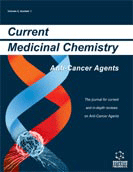Abstract
Drug resistance is a major impediment in the treatment of cancer patients receiving single or multiple drug treatment. Efforts to reverse drug resistance of tumor cells have not been successful. In recent years, considerable emphasis has been placed on understanding the underlying mechanisms that confer drug resistance. The expression of the multidrug resistance protein 1 (MRP1 or ABCC1) in cancer cells has been shown to confer resistance to diverse classes of anti-cancer drugs. MRP1 is a member of the ATP-binding cassette (ABC) family whose function, in tumor cells, is to reduce drug accumulation through energized drug efflux. To learn more about the functions of MRP1 in tumor drug resistance, knowledge of the protein binding characteristics and the location of its binding sites are essential. Photoaffinity labeling (PAL) has emerged as a leading technique that can rapidly shed light on a proteins drug binding characteristics and ultimately drug binding domains. Several MRP1-specific photoreactive probes have been developed. PAL of MRP1 was first demonstrated with the quinoline-based drug, IAAQ. Other studies showed that the high affinity endogenous substrate of MRP1, LTC4, has intrinsic photoreactive properties and binds within both N- and C-terminal domains of MRP1. LTC4 is conjugated to glutathione (GSH), a property common to several MRP1 substrates. In addition, several unconjugated drugs have been identified that interact with MRP1: [3H]VF-13,159, IAAQ, IACI and IAARh123. Mapping studies showed that IACI and IAARh123 bind two sites within transmembrane (TM) regions 10-11 and 16-17 of MRP1. Interestingly, the GSH-dependent PAL of [125I]azidoAG-A and [ 125I]LY475776 occurs within, or proximal to TM 16-17. The PAL with several analogs of GSH, IAAGSH and azidophenacyl-[35S]GSH found to interact specifically with MRP1 within TM 10-11 and TM 16-17 in addition to binding two cytoplasmic regions in MRP1, L0 and L1. This review focuses on the use of PAL for studying MRP1 interactions with various drugs and cell metabolites. Furthermore, knowledge of MRP1 drug binding domains, as identified by PAL with various photoreactive drug analogs, provides an important first step towards more detailed analyses of MRP1 binding domains.
Keywords: mrp1, p-glycoprotein, drug binding domains, abc transporters, photoaffinity labeling, rhodamine 123, glutathione, leukotriene
 21
21

















